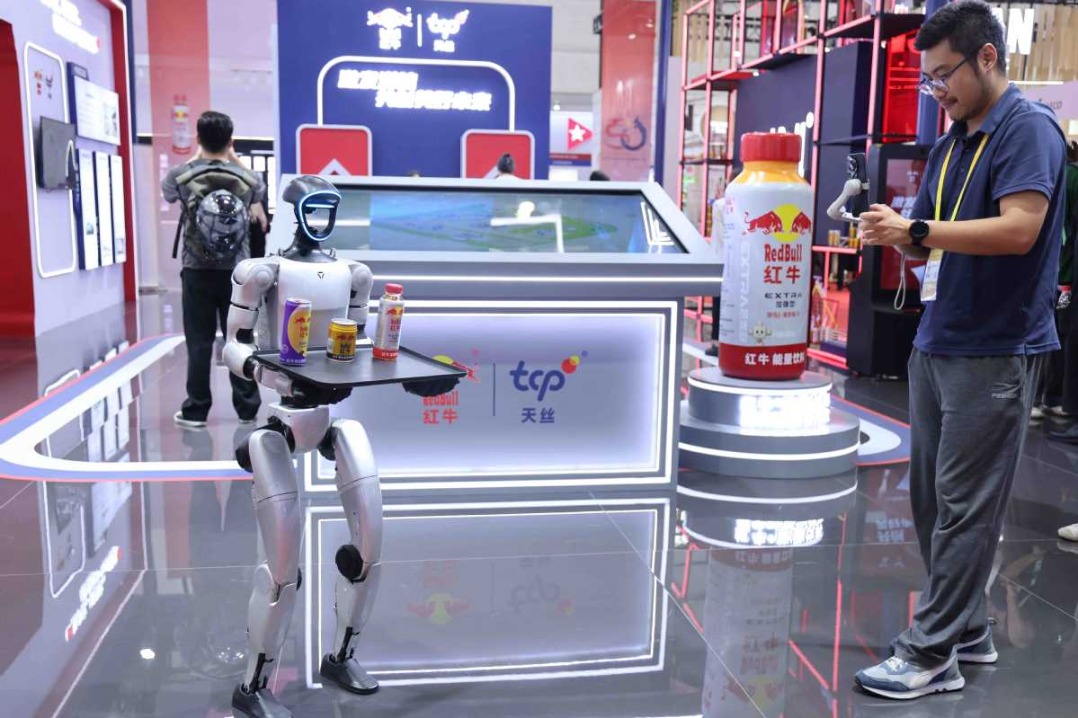Top Future Sectors Set for Growth: Invest in Tomorrow’s Opportunities

China Accelerates Development of Future Industries and AI Integration
Boosting Future-Oriented Industries
China is set to enhance its initiatives aimed at advancing industries focused on innovation, including humanoid robotics, the metaverse, and brain-computer interfaces. This strategic move aims to create new economic growth avenues while expediting the integration of artificial intelligence (AI) across manufacturing and other vital sectors, as stated by a leading official from the Ministry of Industry and Information Technology.
- Boosting Future-Oriented Industries
- Promoting Technological and Industrial Synergy
- AI Adoption Across Various Sectors
- Industrial Growth Trends
- Equipment and High-Tech Manufacturing Surge
- Advancements in Communication Technology
- Future Plans for 5G and 6G Technologies
- Expanding Telecommunications Opportunities
- Sustained Growth in Key Sectors
- The Role of Innovation in Economic Growth
- Key Drivers of Economic Progress
Promoting Technological and Industrial Synergy
Xie Shaofeng, the chief engineer at the ministry, emphasized the need for a more integrated approach to technological and industrial advancements. He called for a swift rollout of the “AI Plus” initiative and urged for accelerated development in biomanufacturing and low-altitude economic activities during a recent press briefing in Beijing.
AI Adoption Across Various Sectors
According to Xie, China has successfully developed and open-sourced AI-driven large language models, which are increasingly being utilized in diverse industries such as electronics and consumer goods. He pointed out that products like AI-enabled smartphones, computers, and glasses are emerging as significant contributors to economic growth.
Industrial Growth Trends
The industrial sector in China has shown a positive trend in the first half of the year, with notable growth in high-tech and equipment manufacturing. Data from the National Bureau of Statistics indicates a year-on-year increase of 6.4 percent in industrial output during the initial six months, with a 6.8 percent rise in June following a 5.8 percent increase in May.
Equipment and High-Tech Manufacturing Surge
In particular, the output from equipment manufacturing soared by 10.2 percent year-on-year, while high-tech manufacturing experienced a 9.5 percent increase, both outpacing the overall industrial growth during this period.
Advancements in Communication Technology
The information and communication sector has also demonstrated robust growth, with over 4.55 million 5G base stations established by the end of June. Additionally, the number of 5G mobile phone users reached 1.12 billion, achieving a penetration rate exceeding 79 percent.
Future Plans for 5G and 6G Technologies
Looking forward, China aims to expedite the rollout of 5G-Advanced networks and enhance research and development efforts for 6G technology. Xie noted the importance of fostering an industrial ecosystem that supports 6G applications.
Expanding Telecommunications Opportunities
The country plans to gradually open up value-added telecommunications services and encourage foreign enterprises to engage in pilot programs. The number of foreign-invested telecom companies in China has surpassed 2,600 in the first half of this year, marking a 27 percent increase compared to the same timeframe in 2024.
Sustained Growth in Key Sectors
New growth sectors, including equipment manufacturing, new energy vehicles, and high-tech industries, have continued to expand significantly in the first half of the year, providing a solid foundation for the overall growth of China’s industrial output, according to Li Xianjun, an associate researcher at the Institute of Industrial Economics.
The Role of Innovation in Economic Growth
Zhu Keli, the founding director of the China Institute of New Economy, highlighted the importance of technological innovation in developing new growth engines and competitive advantages. He noted that China’s focus on cutting-edge digital technologies, such as AI, 5G, and big data, is essential for modernizing traditional industries, lowering operational costs, and enhancing production efficiency.
Key Drivers of Economic Progress
Jason Ding, managing partner at Bain & Co Greater China, pointed out that the primary drivers of China’s economic growth stem from its extensive manufacturing capabilities, commitment to green initiatives, a thriving innovation ecosystem, and technological advancements.







